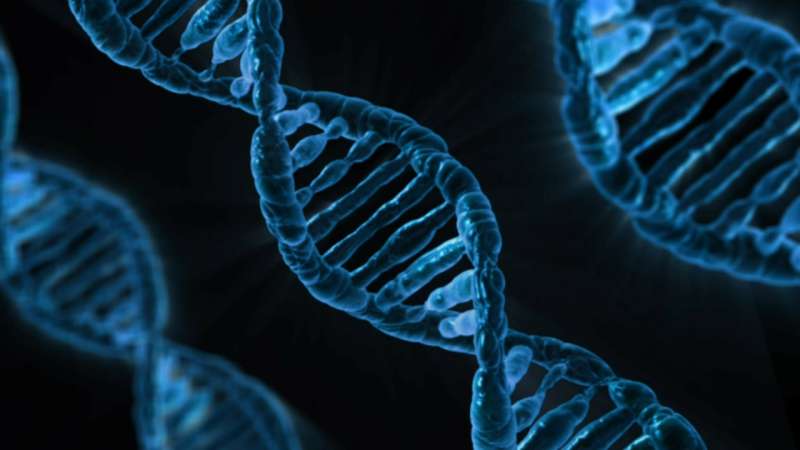Mouse study reveals genes essential for life and provides insights into human disease

Roughly a third of all genes in the mammalian genome are essential for life. A new article in Nature, from an international, multi-institutional research team, including Baylor College of Medicine, describes the large-scale discovery of those genes and how it will impact understanding of mammalian development and human disease.
The work carried out by the International Mouse Phenotyping Consortium included researchers from 8 phenotyping centers representing over 30 institutions world-wide. The IMPC is generating and phenotyping – assessing the morphological and physiological characteristics of – knockout mutations for all of the protein-coding genes in the mouse genome to create a catalog of mouse genes that shows what each gene does. The Consortium aims to discover new functions for the roughly 20,000 genes shared with humans, and makes all of the mouse strains available to provide a platform for dissecting the mechanisms of human disease.
The Nature study, published Sept. 14, reports the results of the first 1,751 genes characterized by the IMPC, including the finding that nearly one third are essential for life. This includes 410 lines that are fully lethal, and an additional 198 for which fewer than half of the expected number of mutants were identified.
Using a new, standardized phenotyping pipeline and mouse strains on a single C57BL/6N genetic background, the researchers established both the time of embryo death and the nature of the lethal features for these lines, discovering many novel characteristics that shed light on the function of these genes. The incorporation of high-resolution 3-D imaging and automated, computational analysis of the images allowed the team to gather detailed data rapidly, thus enabling the discovery of new features at an unprecedented scale.
The team also showed that identification of essential genes in the mouse provides a window on human disease, including the discovery of a number of novel cases in which human disease genes overlap with essential genes. In addition, in collaboration with the ExAC Consortium, they showed that human orthologs of mouse essential genes – human genes that have a common ancestor with mouse essential genes – are significantly depleted for loss-of-function mutations in humans, and that these genes are thus strong candidates for undiagnosed human genetic conditions.
JAX Senior Research Scientist Steve Murray, Ph.D., corresponding author of the study, noted that "when looking across the seven or eight embryos generated for each knockout, we found variations in features at a surprising frequency. We expect diversity when we look across different genetic backgrounds, but this is the first large-scale documentation of pervasive variable expressivity in a defined genetic background."
"This paper is really focused on defining the phenotypes associated with genes that are essential to embryonic and post-natal development. This group of genes is particularly exciting because many of these genes that are essential in mouse are also linked to diseases in humans and the paper reports the efforts to build a catalog of these findings for the community, complete with 3-D images of the defects that were observed," said co-first author Dr. Mary E. Dickinson, professor and Kyle and Josephine Morrow Endowed Chair of molecular physiology and biophysics at Baylor College of Medicine.
Co-author Dr. Mark Henkelman, director of the Mouse Imaging Centre in Toronto, says, "What sets this study apart is the use of high-throughput 3-D imaging with automated analysis to identify novel features that would have easily been missed by gross inspection. The results using 3-D imaging are striking and are surely going to set a new standard for the field."
"This freely available and accessible dataset provides significant new gene-feature associations to enable scientists to prioritize gene candidates identified in their preclinical and discovery research," said co-first author Dr. Ann Flenniken, manager of the Clinical Phenotyping Core at The Centre for Phenogenomics in Toronto.
Co-author Dr. Maja Bucan, professor of genetics at the Perelman School of Medicine at the University of Pennsylvania notes that "the sheer amount of new data reported in this paper is impressive. We compared the genes analyzed in this paper with a list of known human disease genes, which made it possible to identify for the first time the mutant phenotypes in the mouse for 52 human disease genes."
"The IMPC effort has provided an unparalleled model organism resource for functional genomics studies," said co-first author Xiao Ji, doctorate candidate at the Graduate Group in Genomics and Computational Biology, Perelman School of Medicine.
"The work of the consortium will contribute significantly to our understanding of the genetic bases for human diseases including spina bifida and cardiovascular defects amongst many others," said co-first author Dr. Lydia Teboul, head of molecular and cellular biology at MRC Harwell Institute, in the UK.
As current estimates indicate that only a small percentage of genes are studied by the broad research community, the researchers note in the paper, the systematic approach to phenotyping and unrestricted access to data and mouse models provided by the IMPC promises to fill this large gap in our understanding of mammalian gene function.
"This paper is just the tip of the iceberg," said Dickinson. "We want the scientific community to know even more about IMPC efforts and that they have access to the mice as well as the phenotype data. This work is an enormous boon of information for researchers."
All data and images generated by the project are available to the research community, disseminated via an open-source web portal (www.mousephenotype.org) in real time. The mouse models generated are also available to other researchers who may be investigating particular pathways or disease phenotypes.
More information: High-throughput discovery of novel developmental phenotypes, Nature, DOI: 10.1038/nature19356



















